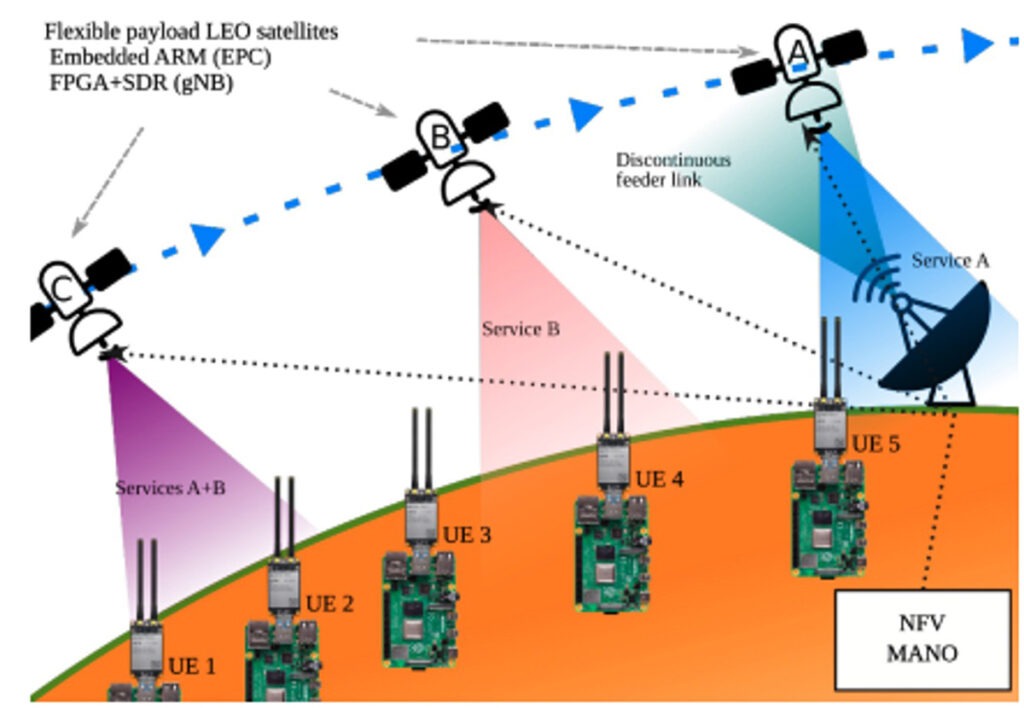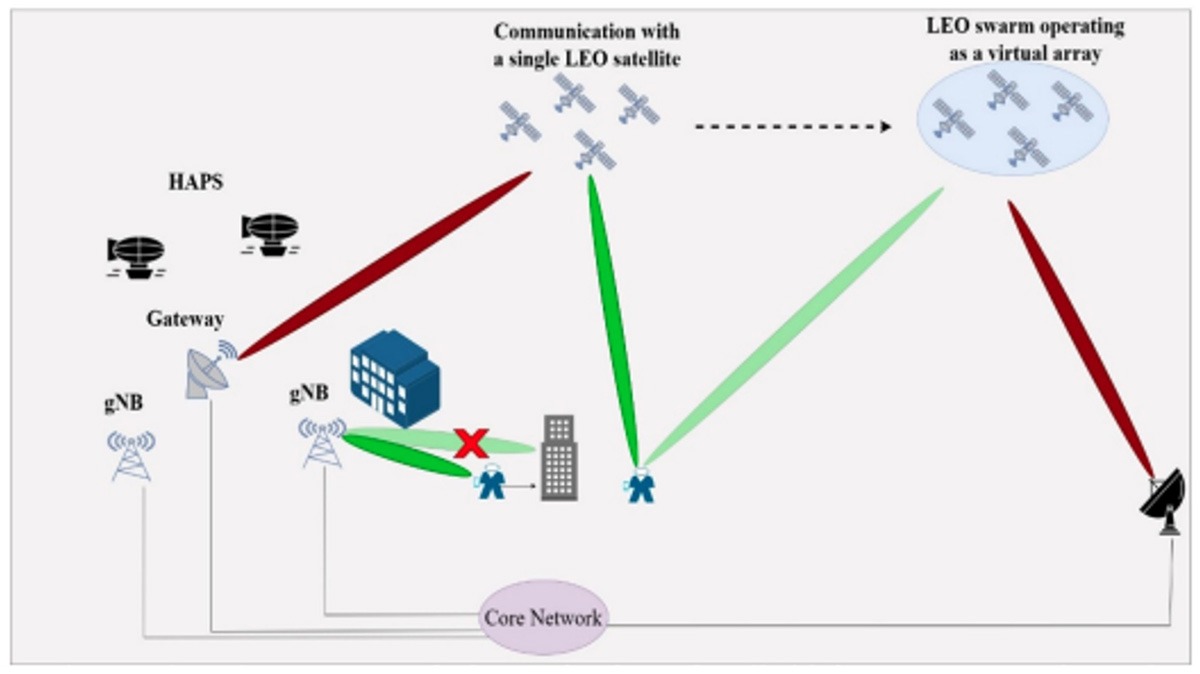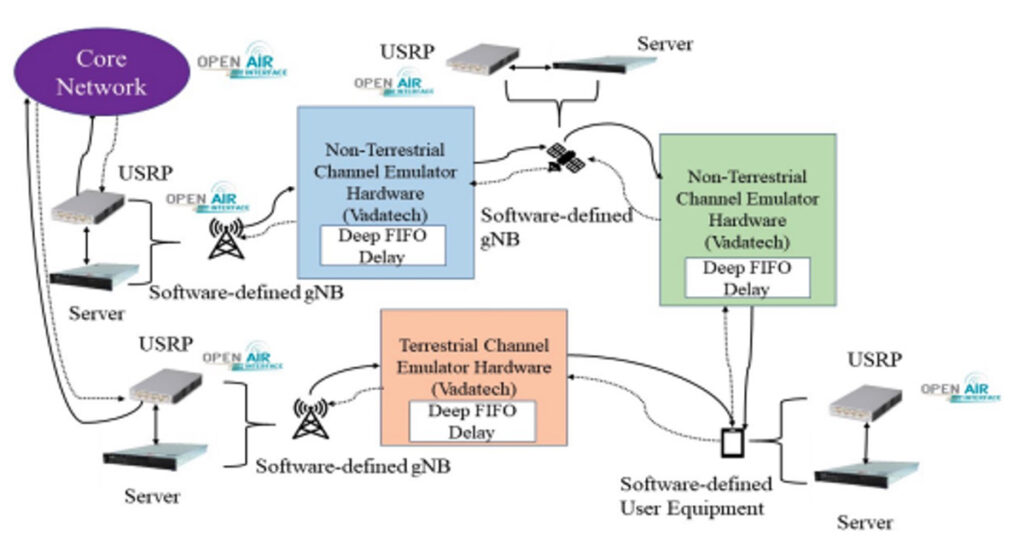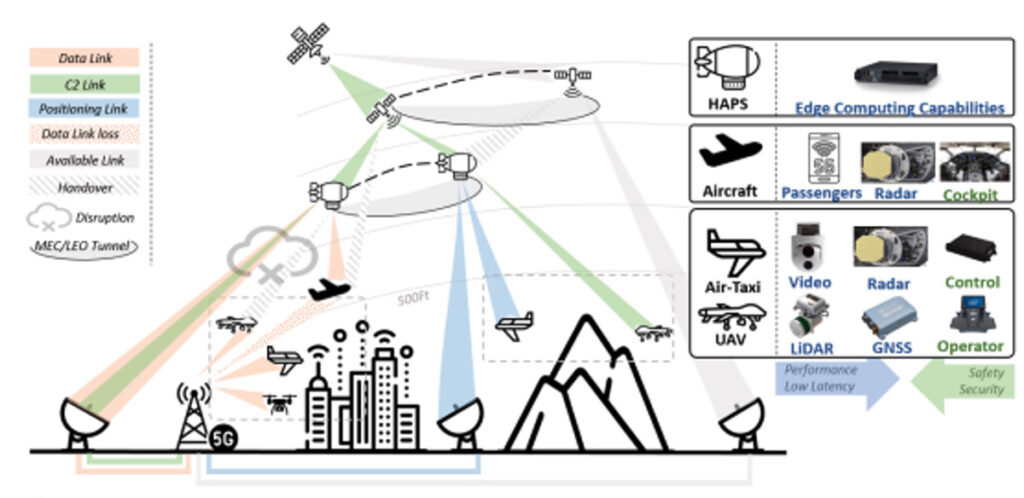ETHER proposes a validation strategy supported by pilots deployed on 3 real use cases, as described next. For each individual use case, the background and main scenarios highlight what the overall context is, as well as the benefits from the use cases perspective driven by a potential ETHER toolset deployment.
Provision of network coverage from LEO satellites with service and feeder link discontinuity will bring global coverage to delay-tolerant mMTC applications.
Satellite-based NTNs are crucial in providing connectivity with global coverage including rural and offshore areas that are fundamental to support important applications in future networks. IoT devices with massive Machine Type Communications (mMTC) applications using NB-IoT will represent a large share of user equipment (UE) in such areas. Current 3GPP standardization efforts focus on transparent payload architectures, requiring complex mega constellations. However, delay-tolerant IoT applications using NB-IoT are a major mMTC example that can be deployed over LEO satellite constellations, and which would significantly benefit from regenerative payloads.
The provision of the NB-IoT service as deployed in a satellite system will be achieved by means of the Flexible Payload. This payload will have a crucial role in the execution of the demonstration. Specifically, the payload will enable to manage the NB-IoT service over a target region among the different satellites. This management will be orchestrated by a ground MANO that will instruct the satellites to activate and deactivate services in a coordinated manner, exchanging status and context with satellites to come.
Involved partners: I2CAT, SIOT, LIU, AVA, OPL, UBW

The direct handheld device access at the Ka band from non-terrestrial platforms and especially from LEO satellites will open the way for truly 100% coverage and broadband communication for terrestrial users even in the most remote areas, eliminating the digital divide between urban and rural areas.
MmWave bands for cellular 5G communication (30GHz and above) are envisioned to soon replace the currently used sub-6 GHz counterparts. In this way, truly broadband communication can be realized due to availability of a much larger bandwidth at the particular bands compared to the latter ones. However, mmWave bands are more susceptible to blockages than the sub-6 GHz ones. In addition, broadband 5G coverage is non-existent in a large number of rural areas. Deploying the necessary number of terrestrial sites to achieve 100% mmWave broadband coverage is not a viable option due to the daunting number of sites this requires.
One major technical innovation of ETHER, is to enable direct handheld device access from LEO satellites through a novel handheld device antenna design enabling electrical beam-steering so as to follow the trajectory of the LEO satellites and the ability of a LEO satellite swarm to form a virtual array for distributed beamforming. The latter would be need to counteract detrimental propagation conditions due to adverse weather effects or when the LEO swarm is far from the vertical position with respect to the handheld device.
Involved partners: UL, NCSRD, AUTH, AVA, SIOT, OPL

The handover and multilink features are key enablers for safety-critical UAM and U-SPACE operations. Safety-critical operation is important because it avoids human injury and death, damage to property and environment, and financial loss. To meet the safety goal, the communication system needs to be reliable, resilient and ubiquitous. It must also satisfy emerging standards for command and control (C2) links and metrics pertaining to packet latency, availability, integrity, and redundancy.
In this use-case (as shown in the figure), one or more UAVs are emulated to move across multiple ground-based network cells covered by LEO satellites. That includes the horizontal handover between terrestrial network cells and vertical handover from ground network to satellite using a unified waveform and access technology. In the network layer, smart multilink capability that manages the dissimilar data links and guarantees the safety-critical service performance through network redundancy will be demonstrated.
For the edge computing demo, UAM & U-SPACE applications requiring short-latency and resilient services will be demonstrated. This MEC component will support evaluation of hosting data distribution for deconfliction and other airspace management services within each network layer, particularly to support evaluation of latency and backhaul performance requirements. Other key criteria to be demonstrated include dynamic synchronization & migration of data at the network edge to follow aircraft users as they move across the network, guaranteeing service continuity.
Involved partners: CA, NBC, AUTH, AVA, SIOT, OPL, NETAI, UBW, I2CAT, UL


